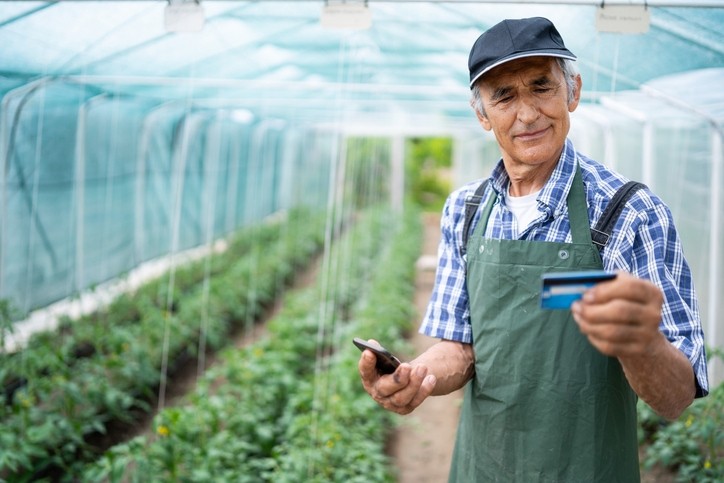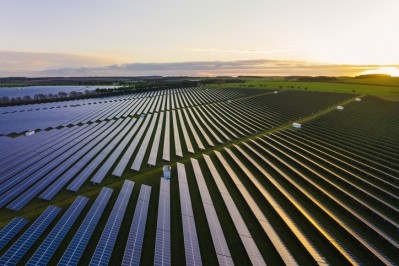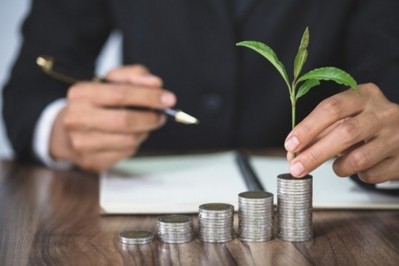Agtech investor profile
The Yield Lab Latam on why access to credit is key to agtech adoption

When Kieran Gartlan first arrived in Brazil around 30 years ago, he plied his trade as a commodities reporter, rapidly becoming a leading voice in the country’s agricultural space. As well as roles at Banco Santander, Dow Jones, and DTN, he spent 10 years as head of the CME Group, the world’s leading derivatives exchange.
It’s a long way from the small dairy farm where he grew up in Ireland. That boyhood farm has since been completely transformed by technology, however. And when Gartlan subsequently turned his hand to the world of venture capital, he knew where the market opportunity lay. “What I identified as the main problem to be solved for agriculture in Brazil and probably Latin America was access to credit,” he says.
A few reasons explain why farmers in the region have traditionally lacked access to credit. Geography is one, with many financial institutions lacking a physical presence in the rural regions where farming families live. Another is the fact that financial institutions often view agriculture as too risky an investment. The seasonal nature of farming, irregular cash flows, and vulnerability to factors like weather and crop diseases make agricultural lending seem unpredictable and high-risk to many lenders, particularly in a region with generally higher interest rates compared to elsewhere in the world.
“Banks didn't want to take on the agricultural risk because they didn't have real visibility into what the risk was,” Gartlan explains. So he asked: could technology make that credit risk management more efficient?
Back when early-stage investor The Yield Lab Latam formed in 2017 there was no such thing as agrifintech, he says. “We saw there was an opportunity for using technology and especially satellite imagery and remote technology to measure not the risk of the farmer but the risk of the production area. We felt that was where the real risk was.”
‘We thought – this is the model’
Enter one of its first investments: Brazil’s Terramagna, or in Gartlan’s words, “the first poster child” of the country's fledgling agrifintech scene. The company, formed by two “really smart rocket scientist guys” fresh out of São Paulo’s prestigious Instituto Tecnológico de Aeronáutica, offers access to credit for farmers through a credit risk management cloud platform powered by AI and satellite inputs.
“It was basically the very first agrifintech looking at that space,” Gartlan says. The founders didn’t have an agricultural background. “But they knew how to create good algorithms and use tech and data to create a model.”
The model was perfect for a situation where input providers were selling fertiliser, seed, and chemicals to farmers on credit based merely on prior relationships. The suppliers, says Gartlan, had no way of measuring the risk that they were assuming each year by lending. “So they loved the solution. They could measure the risk of the farm, not of the farmer.” Customers after one year had typically reduced their default rate to zero. Terramagna went from strength to strength, raising $40 million in a debt and equity funding round in 2022, which included SoftBank Latin America Fund – its first investment in a company with farming-related activities.
“We thought – this is the model,” enthused Gartlan. Its key advantage is its scalability, he explains. “If you can bring credit in a very quick way to farmers online through an app where they can get approved within maybe three hours or at the point of sale, that’s like gold dust for them as they avoid risk of not being able to plant at the right time in the right window. It's a more efficient model than the banks which are looking for guarantees and paper documents, which can take months.”
Meanwhile, if you can get financial inclusion and visibility for the farmer, then you can start with the process of selling them more technology.
“We saw the model as like a beachhead or a wedge into the market to connect with the farmer digitally and then on top of that create layers of value where you can incentivise, say, the use of biologicals by giving green credit lines. Basically, we realised that technology adoption depends on some sort of driver, usually financial. Just selling technology for its agronomic or efficiency use is a slow and hard sell. Whereas if you get in with credit, it accelerates the whole thing. The more tech the farmers uses, the more data points you have for analysing its credit so the more efficient that process becomes.”
Since its success with Terramagna, The YieldLab Latam has invested around $20 million in 23 start-ups in seven countries in Latin America. Not all are agrifintechs. Its portfolio includes biologicals company Botanical Solutions and the shelf-life extension platform Polynatural. Seedz provides business intelligence and insights to large agribusiness companies through its loyalty and sales incentive platform. Agrofort is a digital bank for small and medium producers of poultry, pork and dairy, promoting financial inclusion.
“We won't invest in supermarkets or food delivery but everything along the supply chain,” Gartlan says. “We have a broad range of verticals within ag. For me fintech is the most scalable model, but not the only model.”
Asked what other types of innovation is needed in the market, he responds: “We want to see as much data and visibility being produced especially remotely on farms. Once you have the data and visibility then you have potential to improve efficiency and then maybe monetise new markets.”
What other qualities does The Yield Lab Latam look for in founders?
As an early-stage investor, the potential for significant growth is key. It looks for scalable business models and companies that have already achieved some level of market validation and sales.
“The last thing we look at is the technology,” says Gartland. “We start with the market. Is there an appetite for that solution? Is the problem big enough? We try and evaluate the market need first. Then we analyse the team and their capabilities of execution. Do they have the right channels and contacts to reach the market? And then eventually the market will validate the technology. Sometime the technology can be too good and maybe it's not a good fit for the problem.”
Interestingly, Gartlan reckons the make-up of founders has changed since the pandemic. “Before, we had more technical founders and people with PhDs fresh out of college. They had technology and ideas but didn't really have market experience. We saw a new batch of founders post-pandemic – guys that were from the market with experience of the problems and right contacts and channels. Finding the solutions is surprisingly the easier part of the equation. Once you understand the problem, to find the solution and model it to fix the problem is sometimes much easier than the guy that's a tech genius who doesn't really know the problem he's trying to fix.”





















